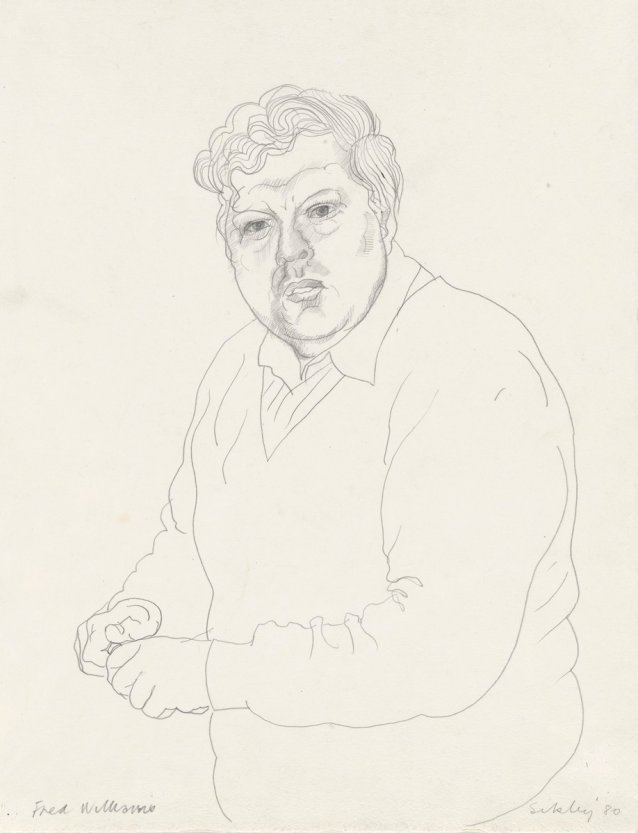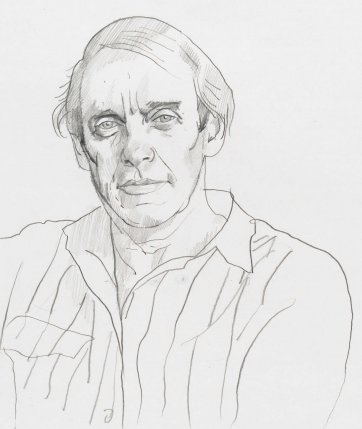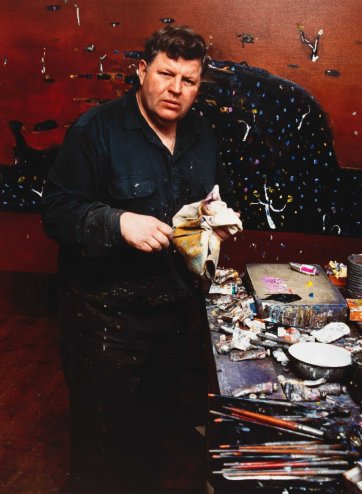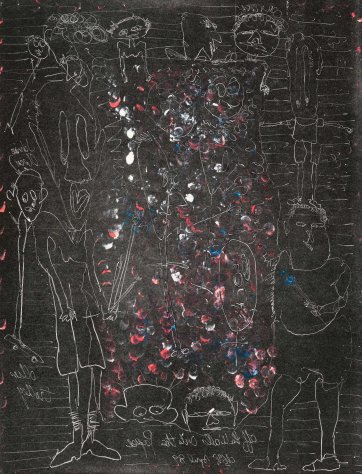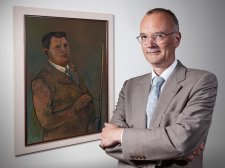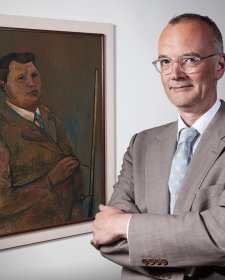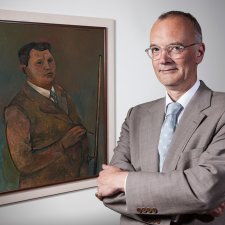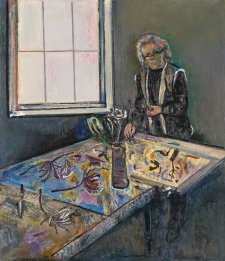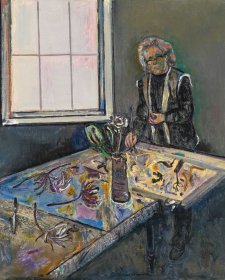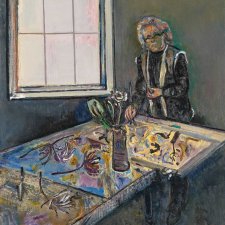Fred Williams OBE, painter and etcher, was one of the most important Australian artists of the twentieth century. His unique landscape vision emerged in the late 1950s, after his return from a period of study and work in London. The 1960s saw an increasing minimalism in his paintings, which reached its most extreme point at the end of the decade. In his monumental works of 1969, he attempted to evoke the vast scale of the Australian land through canvases of a single colour dotted with tiny flecks of paint. Although Williams later turned to representation of denser, more colourful terrain, his bare, uncompromising pictures of the 1960s contributed profoundly to subsequent interpretation of the Australian landscape. Williams made a number of portraits of friends and family members, particularly during the 1970s. He completed his first portrait commission, of Sir Louis Matheson, first Vice Chancellor of Monash University, in 1976; portraits of University of Melbourne figures followed. The National Portrait Gallery has his self portrait at the easel, and his portrait of Murray Bail, with whom he served on the Council of the National Gallery of Australia. Subjects of his other masterly portraits include Rudy Komon and John Brack.
Collection: National Portrait Gallery
Purchased 2010
© Andrew Sibley/Copyright Agency, 2022
The National Portrait Gallery respects the artistic and intellectual property rights of others. Works of art from the collection are reproduced as per the
Australian Copyright Act 1968 (Cth). The use of images of works from the collection may be restricted under the Act. Requests for a reproduction of a work of art can be made through a
Reproduction request. For further information please contact
NPG Copyright.
